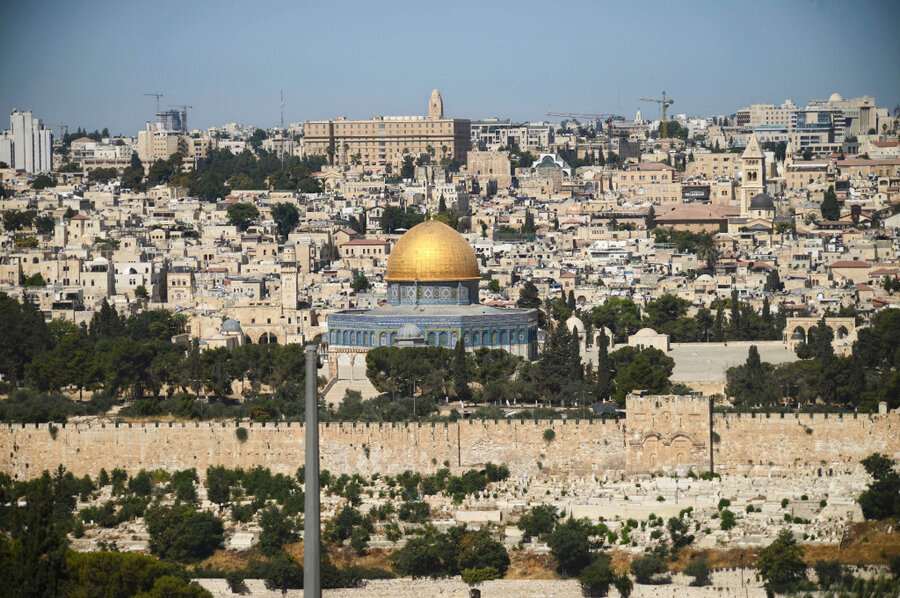What restores peace for Jerusalem’s Old City
In most religions, sacred shrines are meant to remind the faithful of the promise of peace. But for Muslims and Jews in Jerusalem’s Old City, that promise seemed illusive this month. A series of killings, which began at the Temple Mount on July 14, set off the worst violence between Israelis and Palestinians in years. The potential of a major conflict forced emergency intervention by the United Nations Security Council and the United States.
The relative calm that was restored by July 25 speaks to the wisdom of a few Israeli and Arab leaders who put peace above any contest over religious identity, which has long been the issue in determining access to Jerusalem’s holy sites.
The string of violence began when three Arab residents of Israel used concealed guns to fatally shoot two Israeli police officers guarding the Al-Aqsa mosque in the Haram al-Sharif compound (or Temple Mount). Israel then set up metal detectors to check Muslims seeking to pray at the mosque. But it did so without consulting the Jordanian-controlled Islamic trust that administers the site. This was seen as a new assertion of sovereignty by Israel over what Muslims consider to be their third-holiest shrine.
Israel backed down after further violence and dismantled the detectors. It now seeks to install “smart” cameras that can detect guns. That action may not ultimately satisfy Jordan and the trust overseeing the mosque. But Israel’s concession at least shows its sensitivities to Muslim feeling and its own interest in peace above demanding total sovereignty.
Control over the Temple Mount has required a delicate balance of interests between Jordan and Israel since the 1967 war that saw Israel take over East Jerusalem. That balance rests on a mutual recognition of freedom of worship – at least in separate areas – and a desire to keep the peace. The fact that Muslims and Jews have generally accepted this balance shows that they can agree on something. More important, they rise above their respective identities as either Muslim or Jew to embrace a common identity in maintaining peace.
The peace that allows Muslims and Jews to pray at their respective sites is a transcendent significance far beyond that attached to their physical shrines. When violence erupts over control of the sites, it often takes only a reminder of that common bond to restore the calm – and allow worship to go on.







